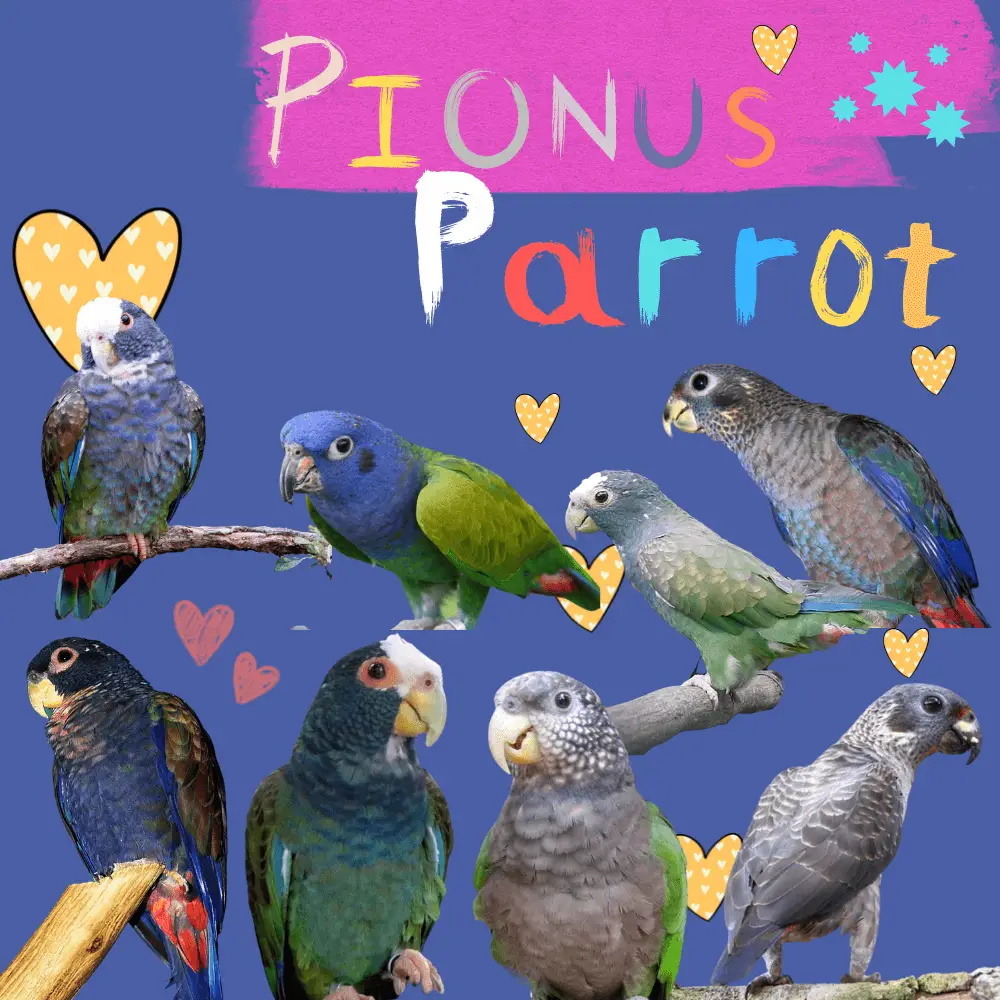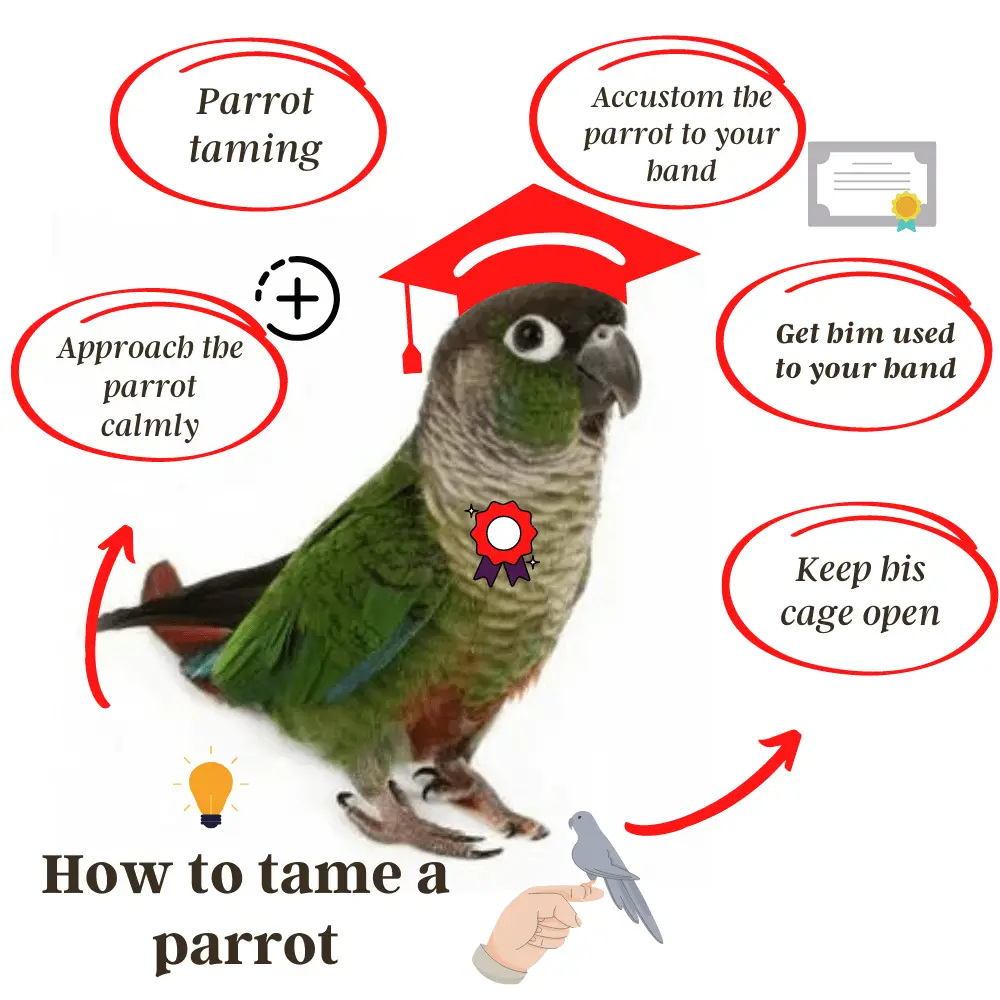How to tame a parrot: Developing a certain bond with a domestic parrot is quite possible, provided you do it right and choose the right breed. If gaining the bird’s trust is a goal within reach, you should know that some breeds of birds are easier to tame than others. But if you put in the time and effort, you can successfully tame your pet parrot and fully enjoy its company. So how do you tame a domestic parrot? What are the easiest breeds of birds to tame? Find out the answers below.
Easiest bird to tame
We told you, bonding and developing a bond with a domestic parrot is a real possibility. Be careful, however, not to confuse a parrot with a dog, because it will not be capable of as much attachment and complicity.
That said, he can be quite affectionate by casually resting on your shoulder or eating from the palm of your hand. Naturally curious, domestic birds are particularly endearing animals. But gaining their trust is a time-consuming process, hence the need to choose a breed that is more inclined to be close to its master.
In the section of birds that are easy to tame, a special mention is given to Psittacidae (cockatiels, lovebirds, touïs, etc.), parrots that are very easily tamed. Breeders who are a little more patient can easily manage to tame most aviary birds, but also zebra finches, small naturally gregarious animals. To help you see more clearly, here is our selection of the easiest birds to tame :
Barred Parakeet

The Catherine parakeet, or Barred Parakeet, is an immensely popular species of parakeet with parrot keepers, especially beginners. It is not very difficult to understand why… the touï Catherine is a small parrot of about 16 cm very appreciated for its vast palette of colors. This species of parakeet is particularly docile and cheerful. She often enjoys playing with her master and likes to be petted on the head or chest.
Canary
As popular as the parakeet, the canary is a very docile parrot, despite its reputation for independence and its lack of interest in humans. In truth, it is a very affectionate species, capable of forming bonds of complicity with its owner, as long as the latter shows patience.
In the end, this naturally fearful little yellow parrot will be able to cling to the master’s finger or his shoulder to enjoy a free ride! Only downside: the canary is “impermeable” to towers. Don’t bother trying because it’s not in his nature.
Red-crowned Parakeet
Originally from New Zealand, the Red-crowned Parakeet has a reputation as a little burlesque clown, which he owes largely to his curious nature. He is also very affectionate and gets used to humans very quickly, to the point of coming to rest on his shoulder on his own. Although independent,
the Red-crowned Parakeet is capable of developing a great bond with its master. Be careful, however, not to make the mistake of carrying it over your shoulder outside. The curiosity that makes his jovial character could quite incite him to fly away never to return.
Pionus parrot

Easy to tame, the Pionus parrot is sociable, gentle, calm, and affectionate. He seems to always wear a beautiful happy smile and likes to be taken for a walk to explore his environment. This little parrot is ideal for people who have to be away for extended periods of time, as it is independent enough not to be bored at home alone.
Parrot taming
Did you know that there is a recipe for successfully taming your domestic parrot? Well, it is, and here are the main ingredients: a generous helping of patience, a healthy dose of confidence, and a bit of reward for positive behavior. Without forgetting the total absence of constraint to put the parrot in confidence.
Before all this, be aware that birds that lived in the wild are very reluctant to attempt taming. It is therefore preferable to opt for birds bred by humans, ideally one of the 5 species we were talking about above. Without further ado, here is the method to tame your domestic parrot:
Approach the parrot calmly
Naturally fearful, domestic birds are afraid of humans, perceived as potential predators. Hence the importance of not rushing them. It is essential to approach them calmly. To do this, place the cage at eye level. In this way, you place yourself on his level, which tends to scare him less. With that done, be sure to talk to him every time you give him food or drink.
The idea is to get him used to the tone of your voice, but also to learn the meaning of the words you use. Adopt a serene posture, and speak kindly to the parrot while offering treats. Be careful not to force him to eat the treats you hand him, rather let him take his marks. Remember, patience is the key to success when it comes to taming a pet parrot.
Depending on the breed chosen, your parrot will accept the treats you serve after a few days or a few months. When this happens, and the parrot agrees to take the food from your hand, take the opportunity to try a little pat on the chest or head. Again, be careful not to rush it. The gesture should be slow and gentle.
The importance of the absence of constraint
Good domestic parrot training is done on the basis of a reward system for the good attitudes of the beast, coupled with a total absence of constraint. You should know that it is useless to force a parrot, the method is indeed counterproductive. We explain. It may seem consistent to show your pet bird that you are angry in response to bad behavior on its part. But in reality, the parrot considers this attitude as attention, and therefore as a reward, which will encourage it to repeat the behavior in question.
The best way to tell your companion that his attitude is unacceptable is to ignore him. This makes him understand that he has nothing to gain from it. On the other hand, do not hesitate to reward the positive attitude of the parrot by giving him his favorite treat.
Accustom the parrot to your hand
To familiarize your domestic parrot with your hand, be sure to introduce it daily into its cage, slowly and calmly. Chances are the bird will get agitated, but you shouldn’t. Keeping calm and moving slowly is a must. When he is very agitated, talk to him gently to reassure him. After a few tries, the parrot will trade agitation for curiosity and will be calmer in the presence of your hand in its cage.
To encourage it to “climb”, put a little millet in the palm of your hand. Over the course of the sessions, the parrot will gradually get used to coming to peck in your hand, then to sitting there or grabbing your finger. If you are patient enough to respect its rhythm, you will soon be able to enjoy a short walk with your little companion hanging on your finger.
How to teach parakeets tricks
SOURCE: Salvador Budgie
As the parrot gets used to your hand, you can teach it a little trick that will amuse young and old alike. Obviously, it depends on its species because, if some can easily learn a few simple tricks, others, like canaries, are unable to do so.
For example, you can encourage the parrot to climb on your hand by teaching it simple verbal commands: “up” to climb, and “down” to descend. As soon as you take the parrot in your hand, say the word “up”. Then reward him. Very quickly, the parrot will associate the word with climbing on a nearby hand, synonymous with reward.

